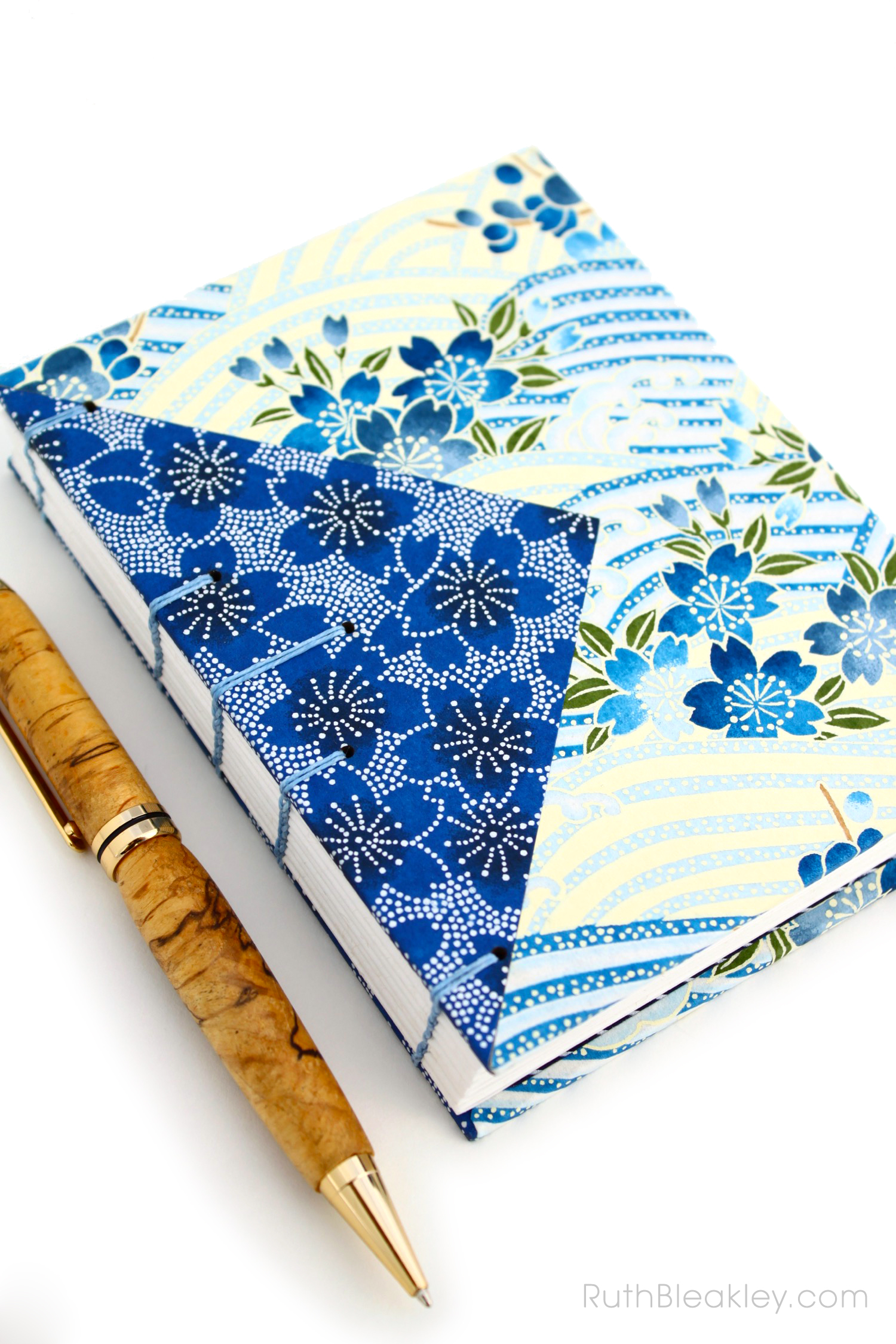
Don’t you love how the cherry blossoms coordinate on the two pieces of paper I used on the covers of this “twin journal” ? If you use chiyogami or yuzen paper as often as I do, you start to see trends and themes emerge. (All of a sudden I just pictured someone talking about the “trends and themes” of balloon and cake imagery on American wrapping paper, hahaha!) Those beautiful jagged-edged blossoms with five petals are cherry blossoms, or “Sakura” in Japan.
Cherry blossoms are an important symbol of Japan, and Hanami is the traditional Japanese custom of flower viewing, dating back hundreds of years. Folks set out a picnic under the blossoms, picnics that can get quite crowded in the city! Detailed flower forecasts on the news tell people when the cherry blossoms are blooming best. Here in the USA we have something similar up North in autumn when the leaves change color – we call it “Leaf-peeping”.
Look at this beautiful image from 1894 by Japanese woodblock artist Toyohara Chikanobu of ladies going to a cherry blossom viewing:

I thought I’d share this amusing quote from the Hanami wikipedia entry:
The teasing proverb dumplings rather than flowers (花より団å hana yori dango) hints at the real priorities for most cherry blossom viewers, meaning that people are more interested in the food and drinks accompanying a hanami party than actually viewing the flowers themselves.
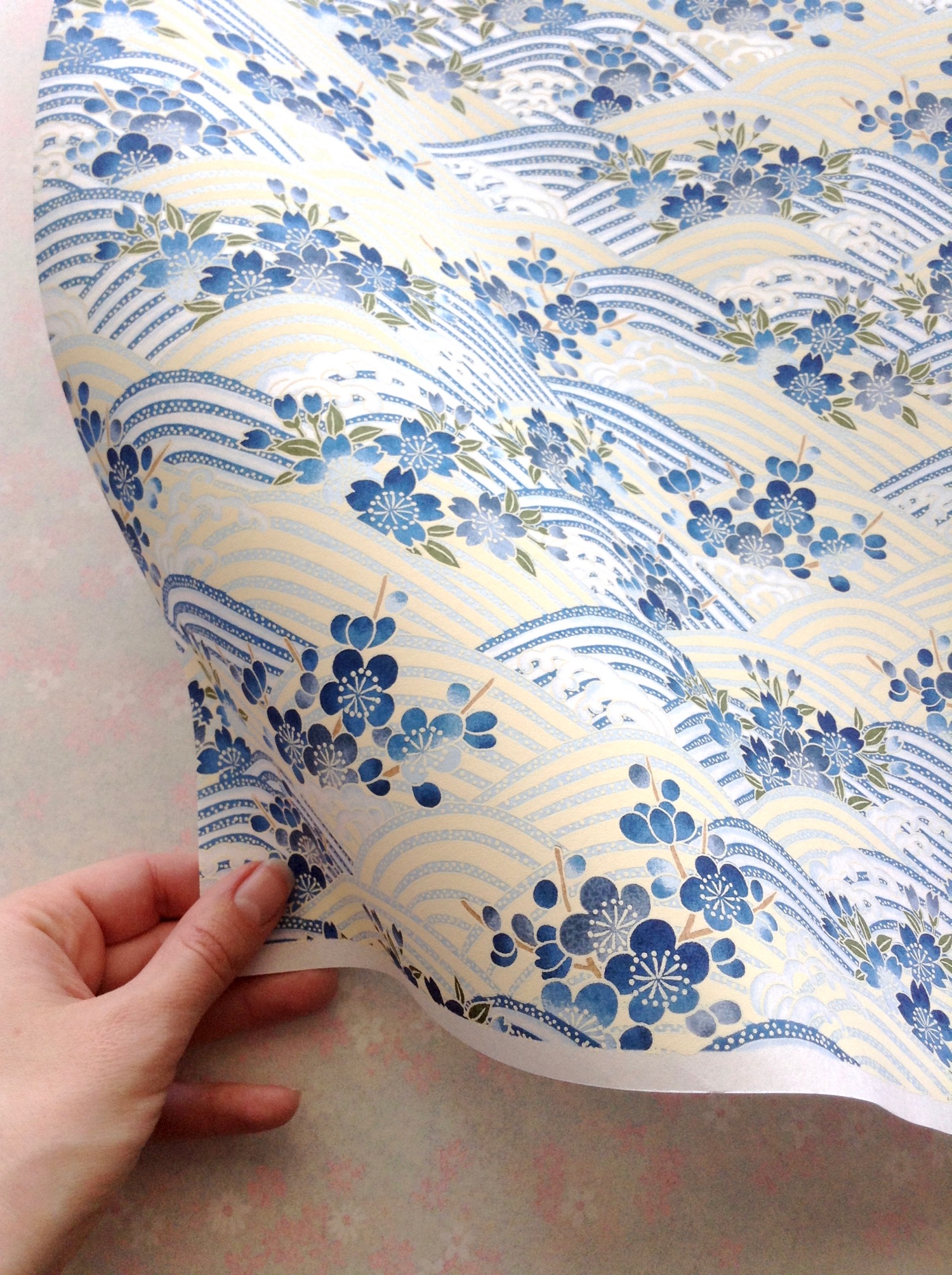
We also have some beautiful waves – I suspect they reference the very famous woodblock print The Great Wave off Kanagawa by Katsushika Hokusai (seen below via Wikipedia).
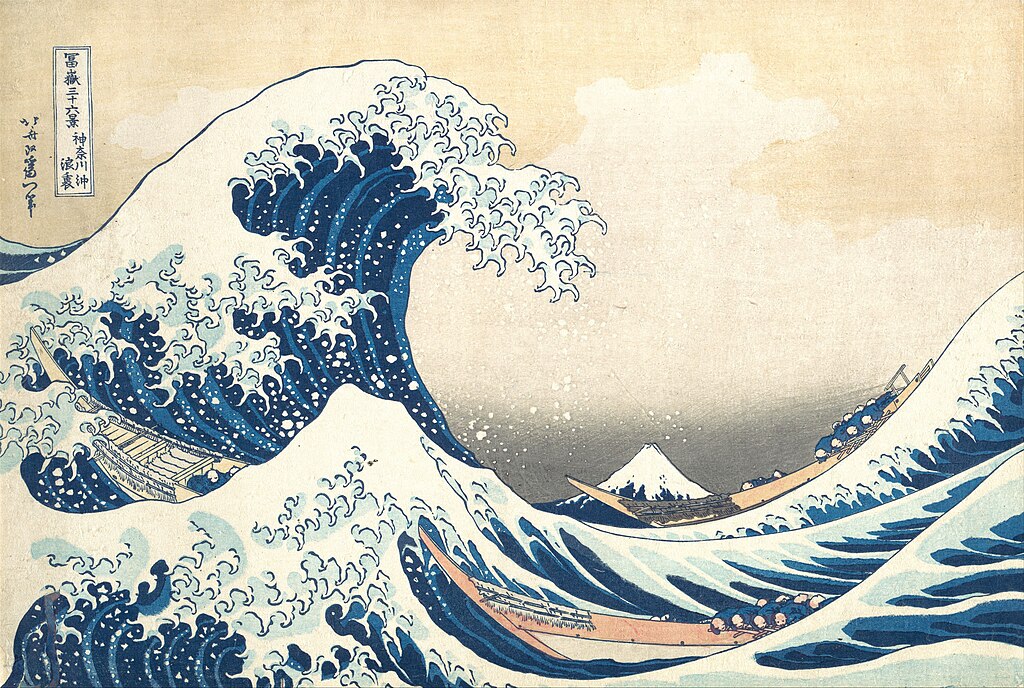
I imagine during the March-May cherry blossom season you can often see flowers floating on the water. The white dots of the dark blue paper reference an extremely detailed and painstaking stencil making technique called Kiribori Katagami, where tiny holes are cut with a chisel and hammer, (not poked through with an awl). If you want to know a bit more about Japanese stencil cutting, there’s a great Google Arts and Culture slideshow about Ise Katagami.
These papers are made with a modern photoemulsion screenprint technique, but the original patterns were most likely based on hand-carved persimmon paper stencils. You can watch a video on how the stencils were originally carved here.
I love how the sakura blossoms in both of these different types of paper were almost the exact same size. Also the blue ink used in the blue and white paper is the same as the dark blue ink on the waves paper. This is a pretty amazing coincidence about the colors matching since I bought the papers years apart. Maybe they came from the same workshop? Without further ado, here are some beautiful photos of the blue waves and cherry blossom journals I made – you can see if I have any left in my online shop here:
Twin Journals Handmade by Ruth Bleakley
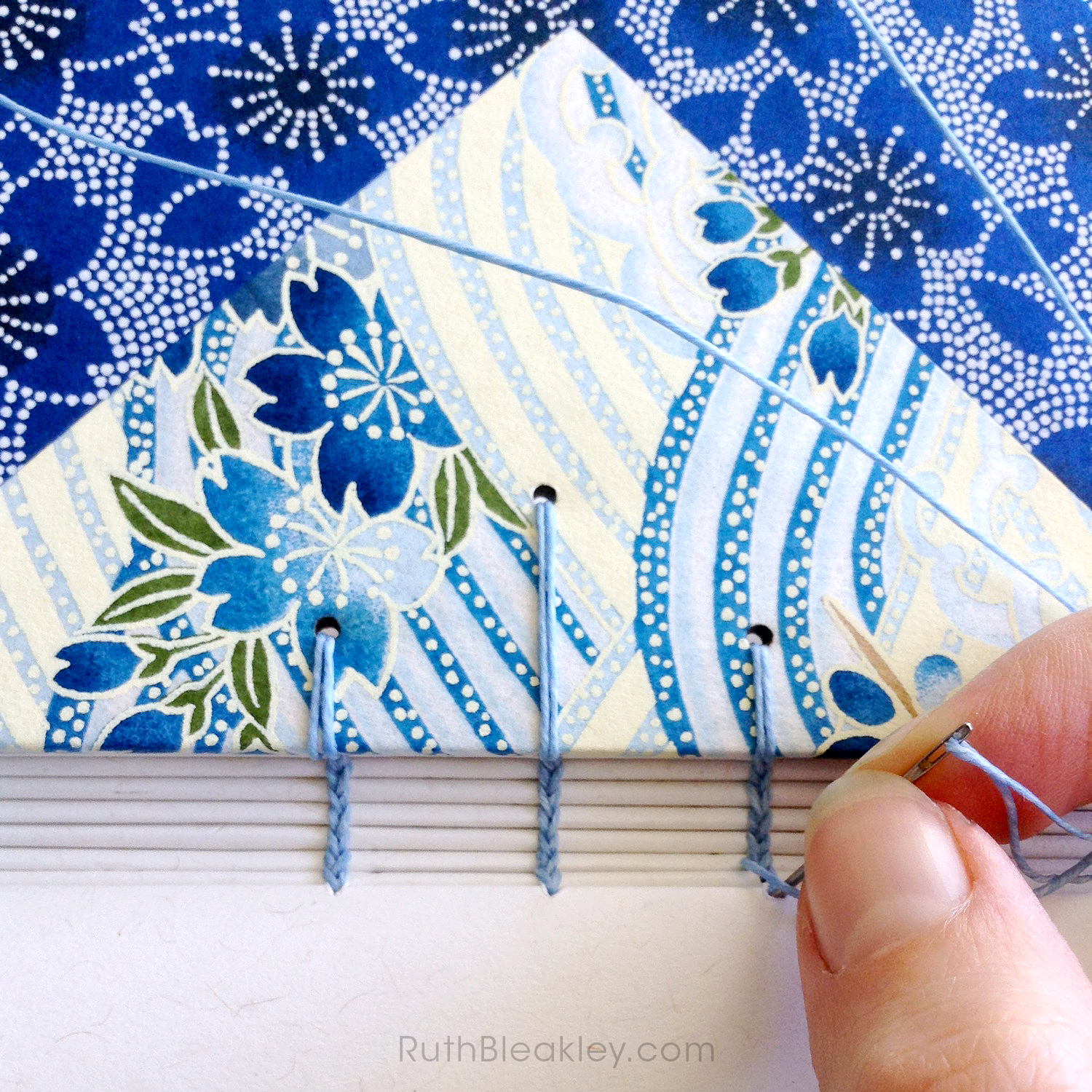
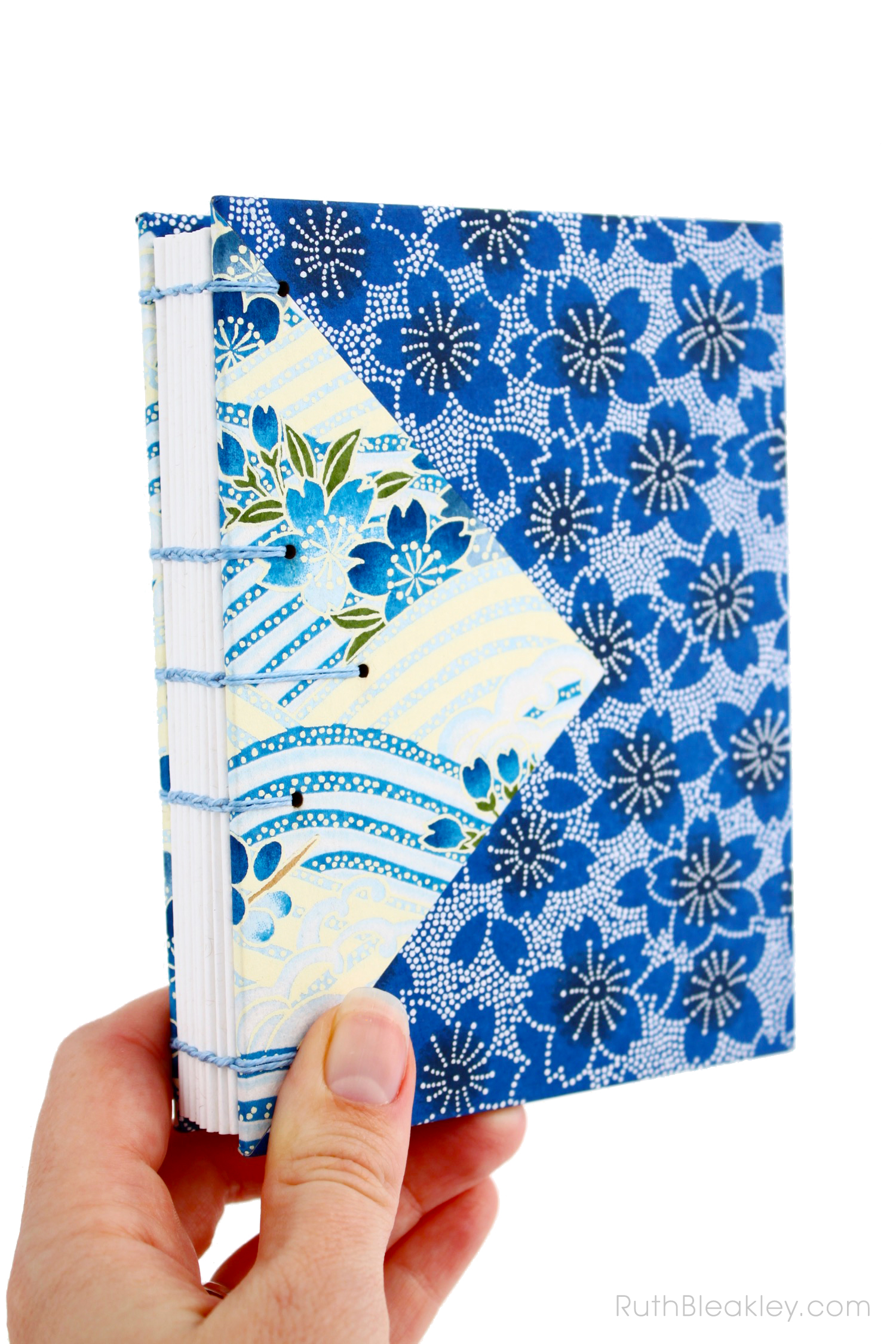
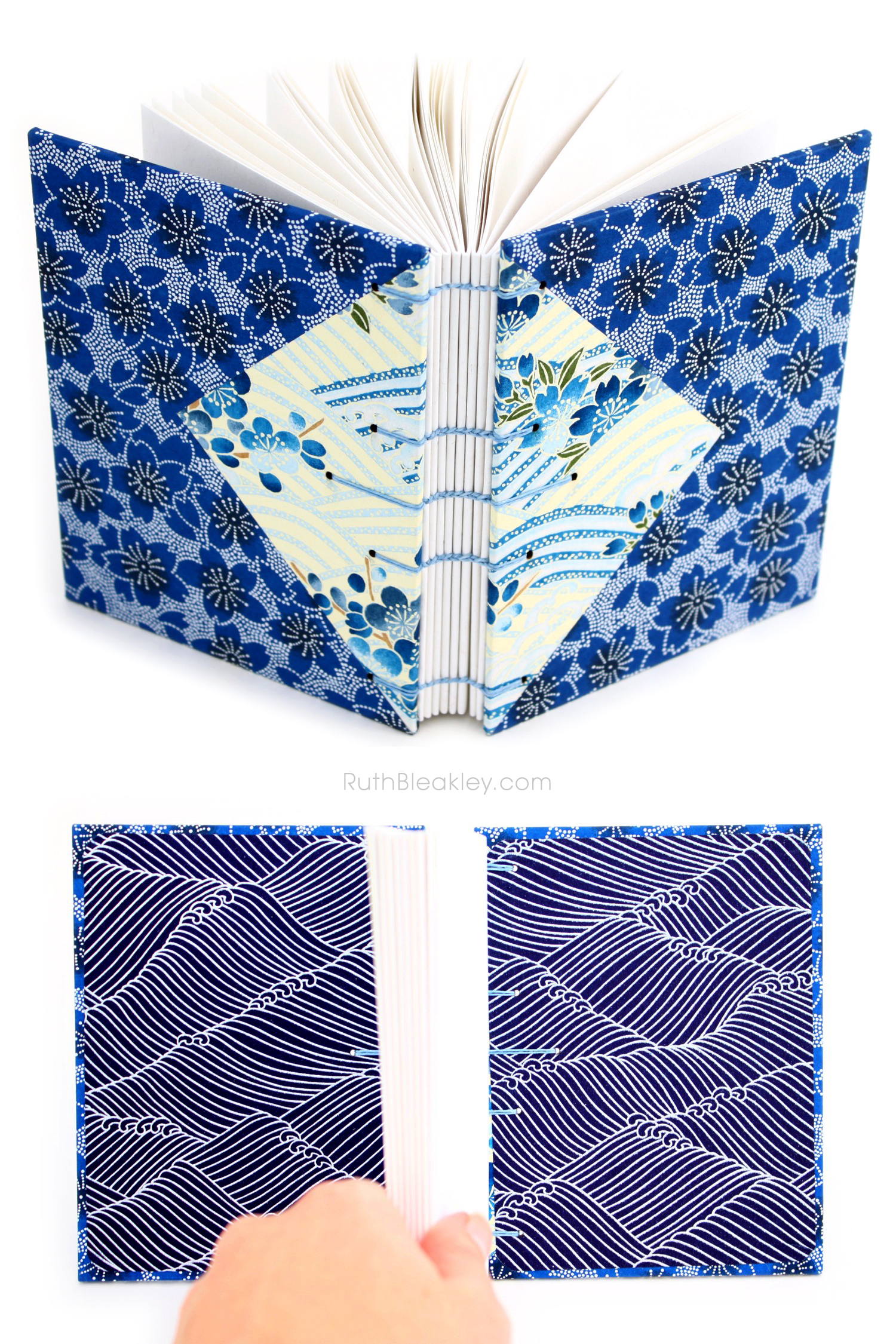
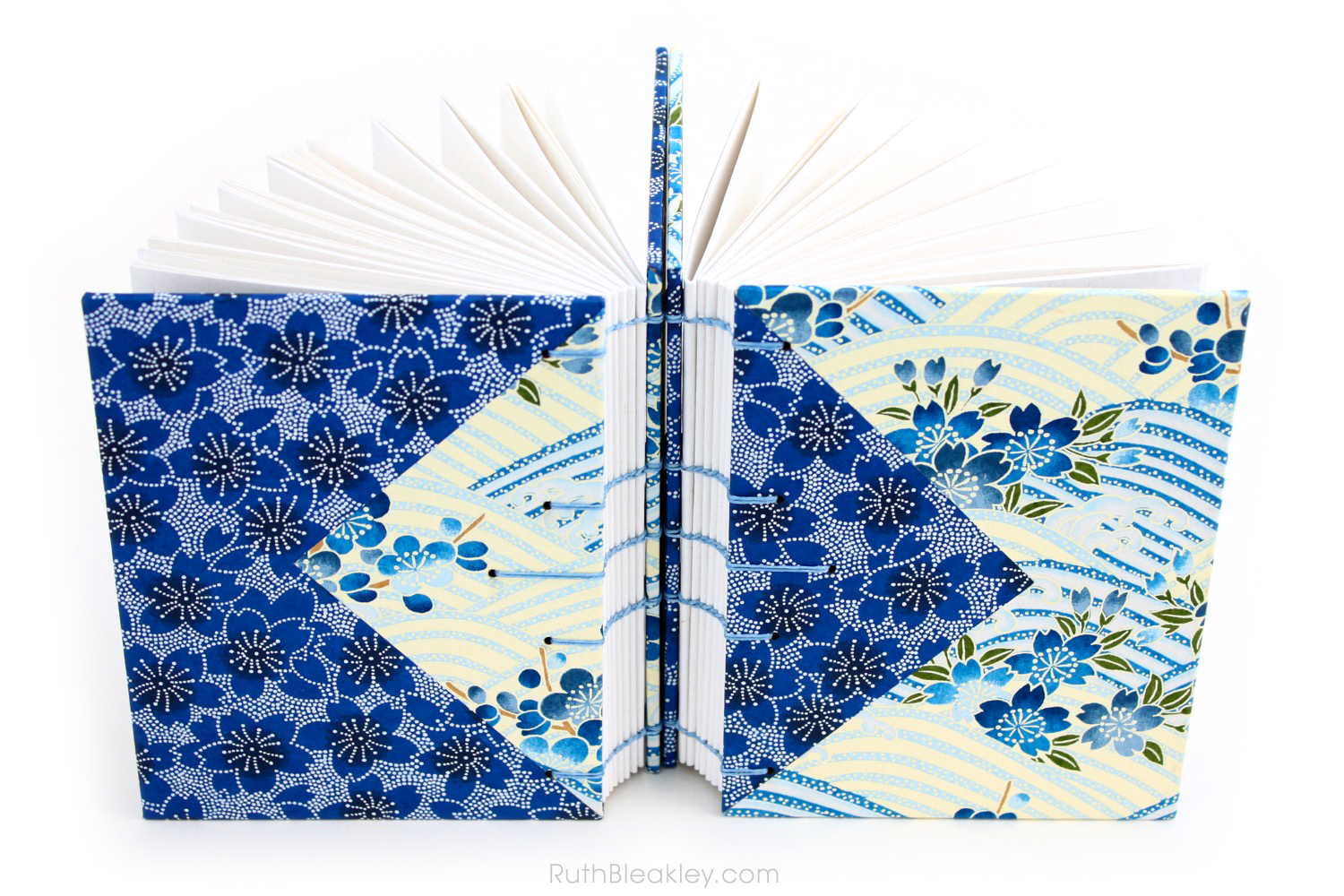
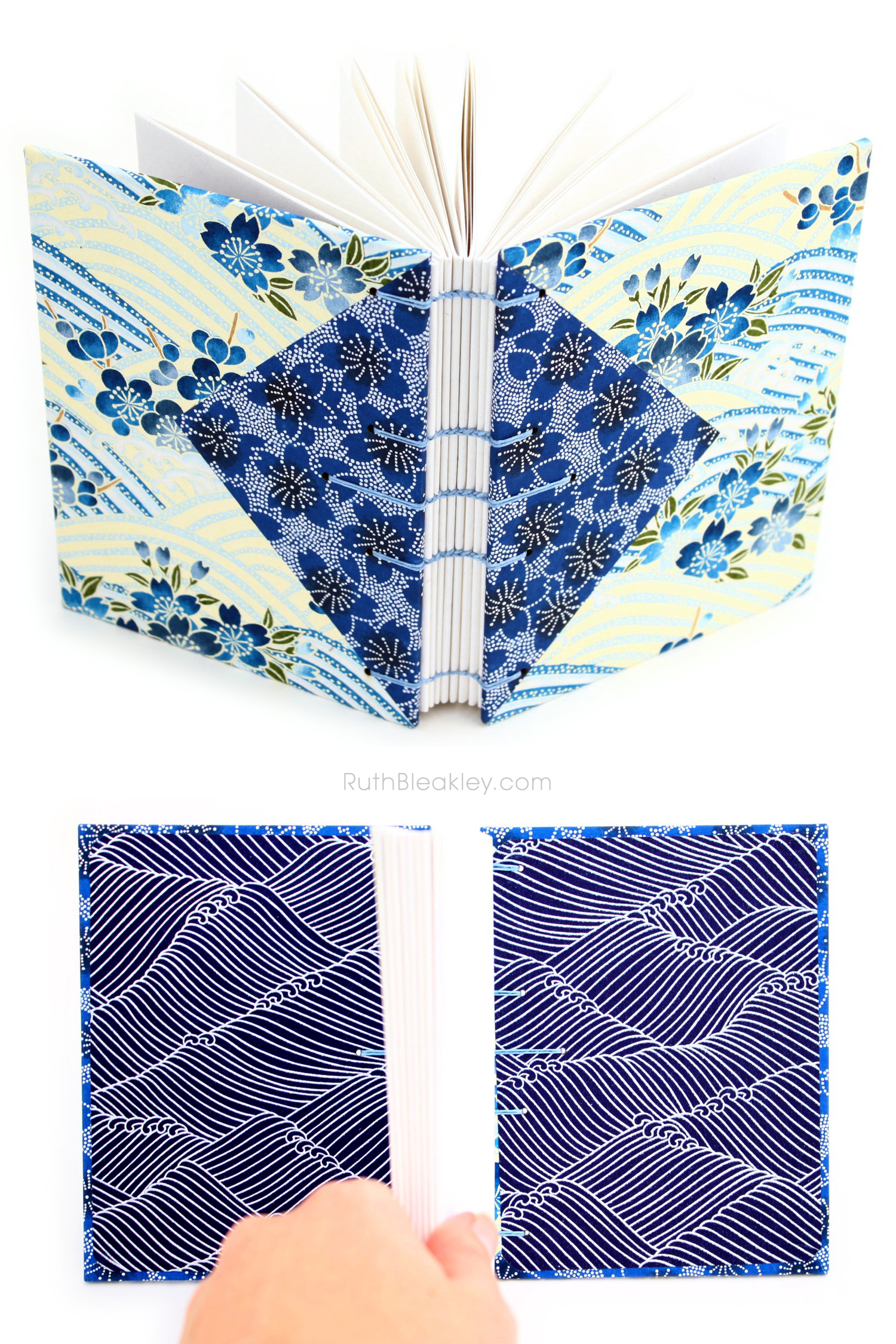
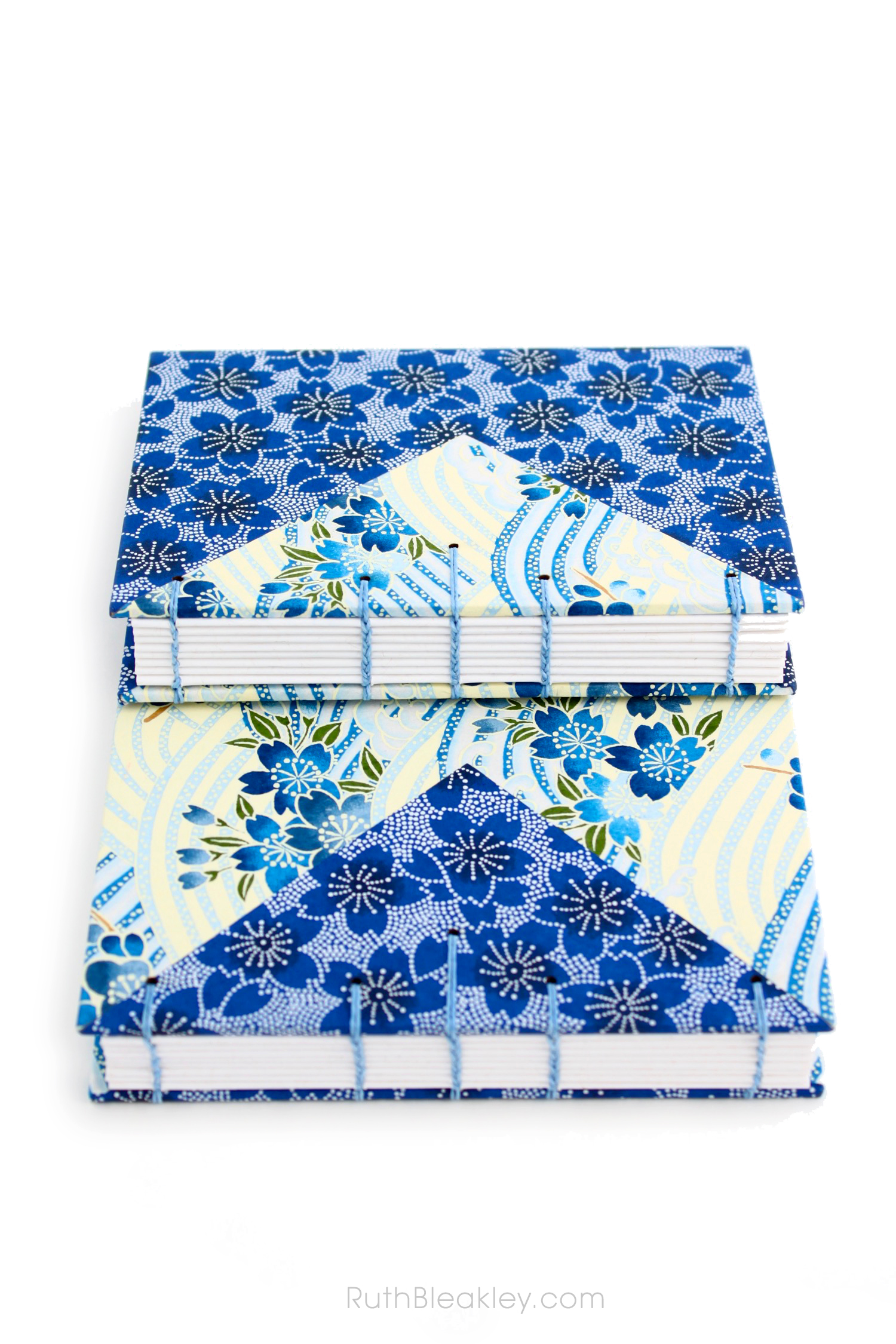
Thanks for reading my post! If you love looking at handmade journals, visit my Instagram, and check out my Pinterest board Handmade Books + Journals (which as of this writing has 10,532 followers! I love Pinterest, so please feel free to pin any of my photos!). Sign up for my newsletter if you want to be the first to hear about new journals I’ve made:
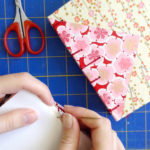
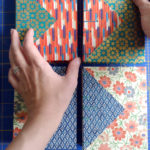
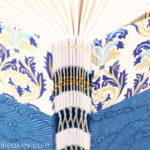
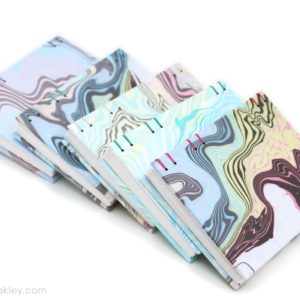
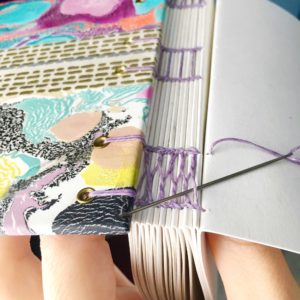
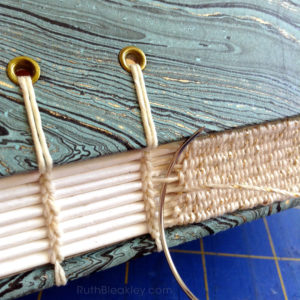




2 Comments
Thank you so much for sharing your knowledge and expertise. I just love your enthusiasm and the manner in which your share your skills.
Thank you so much for reading my post, Denise! It’s fun for me to learn about the history behind the materials I use, too.